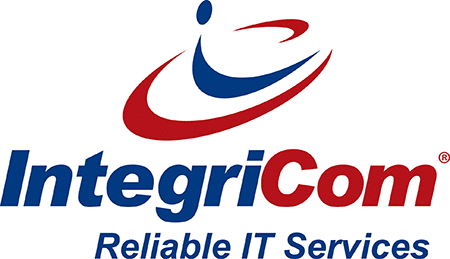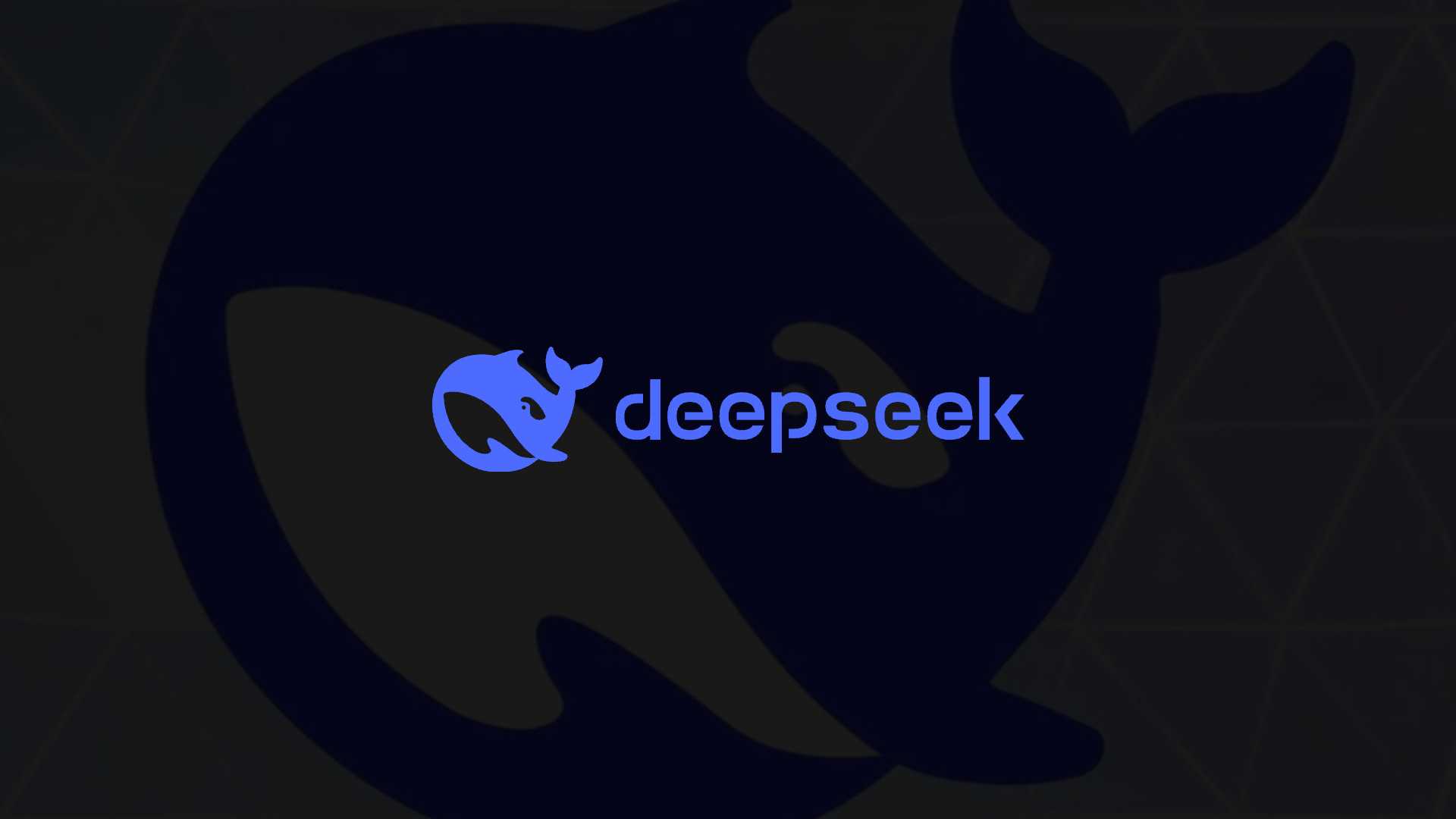Data privacy has become one of the most significant concerns facing modern businesses, especially smaller organizations that might not have an abundance of dedicated cybersecurity resources. At the same time, advanced analytics platforms like DeepSeek and large language models (LLMs) offer opportunities to turn data into actionable insights. Balancing these two dynamics—harnessing the power of analytics while safeguarding sensitive information—presents both challenges and opportunities for small business owners.
This comprehensive guide explores what small businesses need to consider when managing data privacy, how local large language models (LLMs) can reduce risk, and how open-source solutions fit into the equation. By the end, readers will have a clearer view of how to leverage DeepSeek or similar analytics tools responsibly, and how local or open-source LLMs can mitigate concerns about sharing sensitive data with external platforms.
Understanding the Value of Data in Small Business
Data has long been considered a strategic asset. Even the smallest neighborhood store accumulates information about its customers, suppliers, and financial transactions. Over time, these details can reveal patterns that could inform marketing initiatives or highlight operational inefficiencies. For instance, sales records might show that certain items sell more briskly during specific seasons, or that particular promotions work better among certain demographics. By combining these individual pieces of information, small businesses can glean a more comprehensive picture of customer preferences and market trends.
However, the modern world of data analytics extends beyond simple trend analysis. Sophisticated tools like DeepSeek and large language models make it possible to dig deeper into business data, extracting nuanced insights that might otherwise stay hidden. For small businesses that want to maximize profit margins, the promise of these tools is both attractive and intimidating. On one hand, robust analytics can drive precise decision-making. On the other, concerns about privacy, data handling, and compliance become more pressing as the data pipeline expands.
Many small business owners worry that advanced analytics platforms require costly infrastructure or present a steep learning curve. DeepSeek aims to bridge that gap by providing scalable analytics solutions that can fit businesses of different sizes. Nevertheless, every small business must remain mindful of its data responsibilities, particularly when sensitive information—like customer details, contact information, or billing records—is involved.
Privacy Considerations in a High-Tech Landscape
Privacy is no longer just a regulatory checkbox. In a marketplace flooded with news of data breaches and misuse of consumer information, business owners who fail to protect data risk more than legal repercussions—they risk customer trust. Consumers want to feel confident that their personal details are handled with care, and if an enterprise shows signs of lax data protection, it can suffer reputational damage that is difficult to reverse.
Legal and Regulatory Backdrop
Small businesses in various regions are subject to a maze of regulations. The European Union’s General Data Protection Regulation (GDPR) sets stringent requirements for how personally identifiable data must be handled, stored, and shared, although many of its principles have global resonance. Some countries also have their own frameworks, such as the California Consumer Privacy Act (CCPA) in the United States. Even if a small business is not headquartered in these jurisdictions, it may still interact with clients or partners who are. This makes a strong grasp of privacy obligations crucial.
Analytics platforms and large language models can amplify these issues because the data collected might be processed or stored in multiple locations. If a company inadvertently forwards personal data to an external service that lacks robust security or compliance measures, the situation could result in fines and loss of customer confidence. An essential first step for small business owners is to thoroughly examine how each piece of their digital infrastructure collects, stores, and processes data, from their ecommerce platform to any third-party analytics service.
Balancing Convenience and Control
Many platforms offer the convenience of cloud-based analytics because it saves local hardware expenses. Yet storing data externally sometimes means relinquishing a degree of control. If the service experiences an outage or a breach, there is little that the subscriber can do except hope for a quick resolution from the provider. This lack of direct oversight can be unsettling for business owners who handle delicate client information. A trade-off often emerges: use powerful cloud-based analytics or build an in-house system that places privacy at the forefront.
DeepSeek, for instance, can function in a way that keeps data primarily within a small business’s servers or leverages external infrastructure depending on configuration. Business owners must decide how they want to integrate the platform—perhaps restricting the data flows to certain channels or adopting a version of the system that allows for local deployment. This decision depends largely on how much technical capacity the business has for maintaining servers and ensuring security. If an in-house or hybrid setup is chosen, it can help maintain closer control over sensitive data but might require additional investment in IT expertise.
Where Local LLMs Fit into the Equation
Large language models have revolutionized how businesses interpret and generate text. These models can serve as virtual assistants, marketing copywriters, or even data analysis tools. They may also integrate seamlessly with platforms like DeepSeek to offer more intuitive data queries. Instead of sifting through spreadsheets, a small business owner could type a question into a natural language interface and receive summarized insights.
Yet a major question remains: what happens to the data that the LLM processes? A traditional, cloud-based model might store query histories, training data, or conversation logs on servers outside the business’s direct oversight. For certain industries—finance, healthcare, or legal—this can be a substantial risk. Even a small slip could lead to a compliance violation, especially if the conversation with the LLM includes customer names, payment info, or other sensitive details.
Local LLMs represent a new frontier for resolving this dilemma. Instead of sending data to a remote server, businesses can download or host the model on-premises. This approach significantly reduces third-party access, keeping the entire process more private. Because local installations give the user direct control over the hardware and software environment, they can tailor security protocols to match their specific needs. Any training or fine-tuning data never leaves the company’s internal network.
Early adopters of local LLMs have primarily been larger organizations with robust IT departments, but a shift is underway as more user-friendly and resource-efficient versions of these models become available. Specialized open-source solutions, which can run on standard hardware or modest cloud servers, are beginning to put local LLMs within reach of small businesses. This move to local deployment can dovetail nicely with privacy considerations, allowing owners to enjoy many of the benefits of advanced language processing without the same level of data exposure.
Open Source Advantages: Freedom, Customization, and Transparency
Open-source technology has a distinct appeal for small businesses. Unlike proprietary software, open-source code is publicly available, which fosters transparency about how the tool processes data. This visibility becomes crucial when implementing advanced analytics or LLMs, as it provides reassurance that there are no hidden routines siphoning information.
Additionally, open source grants the freedom to customize. If a small business has particular compliance requirements or wants a more specialized model for niche tasks, it can adapt the code. This control contrasts with proprietary solutions that may only offer fixed feature sets. While customization may require some programming expertise, open-source communities are typically supportive, offering documentation and forums to guide newcomers.
Cost considerations also play a significant role. Although open-source solutions are not always free—especially when factoring in hosting, maintenance, and any advanced support contracts—they often have lower entry costs. Users can start small and scale up as their needs and budgets permit.
DeepSeek and many commercial analytics platforms may incorporate open-source libraries or algorithms behind the scenes. That said, employing a fully open-source analytics approach requires a deliberate strategy. Business owners must evaluate whether they possess the internal skill set to manage and secure an open-source tool. If not, they may opt for a service provider that offers a managed version of the open-source stack, combining the benefits of transparency with professional support.
Concerns About DeepSeek’s Privacy Policy and Potential Data Transfers to the CCP
In the past year, several users and industry observers have scrutinized DeepSeek’s privacy policy, raising red flags about its data-handling practices. Among the most serious claims is the fear that sensitive information could be transmitted to entities under the jurisdiction of the Chinese Communist Party (CCP). These concerns stem primarily from questions about where DeepSeek’s data servers are located and whether data processing arrangements might allow the Chinese government direct or indirect access to user information.
Some who have read the policy closely point out clauses that might permit data sharing with “third-party subsidiaries” or “partner data centers,” including those in regions with different levels of government oversight. Because Chinese data laws enable government authorities to request access to servers located within their jurisdiction, businesses in the West and elsewhere worry that their proprietary or customer information could be exposed if stored on, or routed through, infrastructure within China.
For small businesses, these revelations or suspicions create new legal and ethical dilemmas. Even if the policy language is ambiguous rather than explicitly stating “data will be transferred to CCP authorities,” the possibility remains that local regulations in China could compel data centers or tech vendors to comply with government requests. This risk intensifies if the data in question includes personally identifiable information, financial records, or trade secrets.
Addressing these concerns requires a multi-pronged approach:
- Careful Policy Review: Business owners must read the privacy policy in detail or engage legal counsel to interpret any vague or technical clauses that may permit broad data-sharing.
- Transparent Communication: DeepSeek users should request clarifications directly from the service provider. Reputable vendors often issue statements about their data practices in response to user feedback.
- Risk-Benefit Analysis: If the platform’s features are valuable, owners must decide whether the rewards outweigh the potential risks. They can also explore alternative configurations, such as local or hybrid deployments, to mitigate exposure.
Ultimately, the concerns surrounding DeepSeek’s alleged data transfers underscore the critical need for transparency in analytics platforms. While these worries may or may not be fully substantiated, any suggestion that data might reach foreign government hands emphasizes why businesses should continually assess who has access to their information. In some cases, switching to local deployments or exploring other analytics platforms can provide peace of mind.
Common Pitfalls in Data Management and How to Avoid Them
Data management is not just about installing the right software; it involves a holistic process that includes governance, training, and consistent monitoring. The rapid introduction of AI-driven tools into small businesses can sometimes exacerbate existing data pitfalls. Although each enterprise has its specific challenges, several recurring themes often emerge:
Lack of a Clear Data Retention Policy
Business owners sometimes keep data indefinitely, thinking it might one day prove useful. Yet outdated or redundant data can become a liability. If a breach occurs, the damage increases when old records are still accessible. Additionally, from a compliance perspective, many regulations suggest (or mandate) time limits on storing certain categories of data. Establishing and documenting a retention policy, and then training staff to follow it, can protect both customers and owners.
Overreliance on Third-Party Services
Relying too heavily on external platforms or vendors, especially when those platforms are not fully transparent about data handling, can expose the business to vulnerabilities. If a service is compromised, user data may be at risk. Maintaining at least partial in-house control over core systems, particularly those dealing with proprietary or sensitive information, provides a safety net.
Inadequate Staff Training
Even the best analytics platforms cannot compensate for poor data handling practices by employees. Whether it is falling victim to phishing attempts, sharing login credentials, or neglecting to patch vulnerabilities, human error is frequently cited as a leading cause of security incidents. Implementing a regular training schedule helps ingrain best practices, teaching personnel about safe data handling, password hygiene, and emerging threats.
Skipping Risk Assessments
Before deploying a new analytics feature or migrating data to a platform like DeepSeek, small businesses should conduct a basic risk assessment. This process typically entails identifying what data is being moved, how it is being protected, and who can access it. The business can then weigh potential gains against any security or compliance risks. While this step may sound time-consuming, it often reveals overlooked issues and instills confidence that operations are well-managed.
Comparing Local vs. Cloud-Based LLM Deployments
The following chart offers an overview of how local LLMs contrast with their cloud-based counterparts. It highlights several factors—privacy, scalability, cost, and performance—that small business owners frequently consider when making technology decisions.
| Criteria | Local LLM | Cloud-Based LLM |
|---|---|---|
| Privacy | Data stays on-site, offering stronger control over how it is stored and processed. Ideal for handling sensitive info or proprietary content. | Data must be sent to external servers, potentially exposing it to unauthorized access if the provider experiences a breach. |
| Initial Cost | May require hardware upgrades and technical expertise to set up. Long-term expenses can be lower if managed properly. | Often lower upfront costs, as businesses pay primarily for usage. However, fees can scale quickly as data volume grows. |
| Scalability | Scaling may demand additional hardware and specialized IT knowledge but remains under the business’s control. | Providers handle the scaling automatically, which suits businesses lacking in-house IT resources, but may incur higher monthly fees. |
| Customization | Highly customizable, especially with open-source solutions. Businesses can modify or fine-tune models to meet specific needs. | Typically limited to settings allowed by the platform. Customization beyond superficial levels often requires specialized enterprise contracts. |
| Performance | Performance depends on local hardware capabilities. Once well-optimized, local setups can offer rapid responses. | Performance improvements may be automatic due to large-scale infrastructure, although the internet connection can be a bottleneck. |
| Compliance | Easier to demonstrate compliance if sensitive data never leaves the local network, especially in regulated industries. | Compliance depends partly on the provider. While many meet industry standards, the user lacks full oversight of the data environment. |
This chart underscores the distinctions that small businesses must weigh when deciding between local and cloud-based deployments for LLMs. The right choice depends on various factors, from budget to compliance obligations. In some cases, a hybrid approach—where less sensitive tasks run in the cloud while critical operations remain local—can offer the best of both worlds.
Integrating Local LLMs with DeepSeek
Local LLM implementations, when combined with analytics platforms like DeepSeek, create a powerful ecosystem. The LLM can interpret natural language queries, turning them into more formal data requests. DeepSeek can then handle the heavy-lifting analytics, returning structured insights. The user experiences a conversational interface that draws from a reliable and secure data foundation.
Practical scenarios might include a manager asking, “What were last quarter’s sales in our western region, and how do they compare to the previous year?” The local LLM translates that query, DeepSeek fetches the relevant metrics, and the LLM then summarizes the results in a user-friendly manner. Throughout this process, critical sales data never leaves the local environment, reducing the risk of exposure.
To implement such a setup, a small business generally needs the following:
- Hardware or a secure server environment capable of running an LLM
- Network configuration that ensures data traffic stays within the organization
- Integration layer or plugins enabling communication between DeepSeek and the LLM
- Training for staff to formulate effective queries and interpret generated insights
Once the technical framework is in place, the business can iteratively refine the system. Over time, usage data reveals where queries consistently fail to produce the desired results. Adjustments to the LLM’s training parameters or DeepSeek’s data mappings can improve accuracy, turning the setup into an even more agile decision-making tool.
Fostering a Culture of Security and Responsibility
Technological solutions, whether it is DeepSeek for analytics or a local LLM for natural language processing, function best within an organizational culture that prioritizes security. When employees understand the “why” behind data protection measures, they are more likely to act responsibly. Too often, data breaches start with simple human oversights—a weak password, a misdirected email, or a failure to apply software updates.
Regular training sessions can keep employees current on best practices. These sessions might cover new phishing techniques, safe data sharing protocols, or how to use strong, unique passwords. Even a short monthly workshop or newsletter can be surprisingly effective in keeping security measures top of mind. If new software is introduced, such as an open-source local LLM, part of the onboarding should clarify how it stores data, who can access it, and why it’s essential to restrict model updates to verified sources.
Business owners can also appoint a “privacy champion” or data protection officer, even on a part-time basis. This individual takes responsibility for verifying that data policies are adhered to, software is updated, and employees follow protocols. In very small organizations, the owner might take on this role, though it can be beneficial to delegate it to someone with a deep interest or background in technology and data.
Planning for the Future: Scalability and Adaptability
Small businesses often launch with basic analytics needs. Over time, they might grow in complexity, adding new product lines or venturing into new markets. The data demands shift accordingly, and any chosen platform—DeepSeek or a local LLM—must adapt. The advantage of an open-source and locally hosted approach is that scaling can be done selectively. A business might decide to add more robust hardware only when data needs grow, avoiding the unpredictability of monthly usage fees or service-level changes from external vendors.
Adaptability extends beyond technology. Employees who are comfortable with data-driven workflows become key drivers of innovation. They might conceive of new questions to ask the LLM or propose expansions of how DeepSeek processes data. This iterative approach results in a living ecosystem, where data usage evolves with the business, rather than remaining stuck in a single configuration that was set up years ago.
Of course, successful scaling requires periodic evaluations. Leadership should regularly assess whether hardware is sufficient, if security protocols remain robust, and whether the analytics still align with strategic goals. In a world where technology changes rapidly, staying ahead means building flexibility into any system from the outset.
Measuring the Impact on Productivity and ROI
Data analytics and AI are not ends in themselves. Their ultimate value lies in improved efficiency, revenue growth, or cost savings. For a small business, measuring the impact of deploying DeepSeek or a local LLM is crucial. Metrics could include shorter project turnaround times, reduced reliance on external agencies for analytical tasks, or higher satisfaction scores among customers whose needs are now better understood.
One straightforward way to measure ROI is to compare the cost of technology and training against revenue gains or cost reductions over a set period. For example, if implementing a local LLM helps your customer support team handle queries more efficiently, you might see tangible savings in labor hours or a reduction in outsourced support. Alternatively, if you run a marketing campaign based on insights from DeepSeek and observe higher conversion rates, that uplift can be directly attributed to the analytics platform’s contribution.
Additionally, keep an eye on intangible benefits. Employees might express greater job satisfaction when they have tools that streamline tedious tasks. The brand image might improve if customers perceive that the business is responsibly leveraging advanced technology for their benefit without overstepping on privacy. These elements, though harder to assign a dollar value to, can still be pivotal to long-term success.
Conclusion
For small businesses navigating the complexities of data privacy, analytics, and AI, the stakes have never been higher. Modern platforms like DeepSeek can illuminate hidden patterns, enabling more informed decisions about marketing, inventory, and operations. However, these benefits must be balanced against the pressing need to safeguard sensitive information. Evolving regulations and heightened consumer expectations amplify the importance of robust privacy practices and transparent data handling policies.
Local LLMs, particularly those based on open-source software, add another dimension to this conversation. They present a compelling way to harness advanced language processing without sending sensitive data to third-party servers. By combining open-source flexibility with on-premises hosting, businesses can retain control over critical information and demonstrate a commitment to privacy. This approach often aligns well with regulatory demands, especially for companies operating in sectors that handle personal or financial data.
Every tool or platform requires a thoughtful implementation strategy. From drafting clear data retention policies to training staff on best practices, the process of deploying DeepSeek or setting up a local LLM involves multiple steps. The journey can be simplified by focusing on incremental adoption, rigorous risk assessments, and ongoing reviews. A well-structured data management system fosters a culture of responsibility, where employees know why privacy matters and how to protect it.



